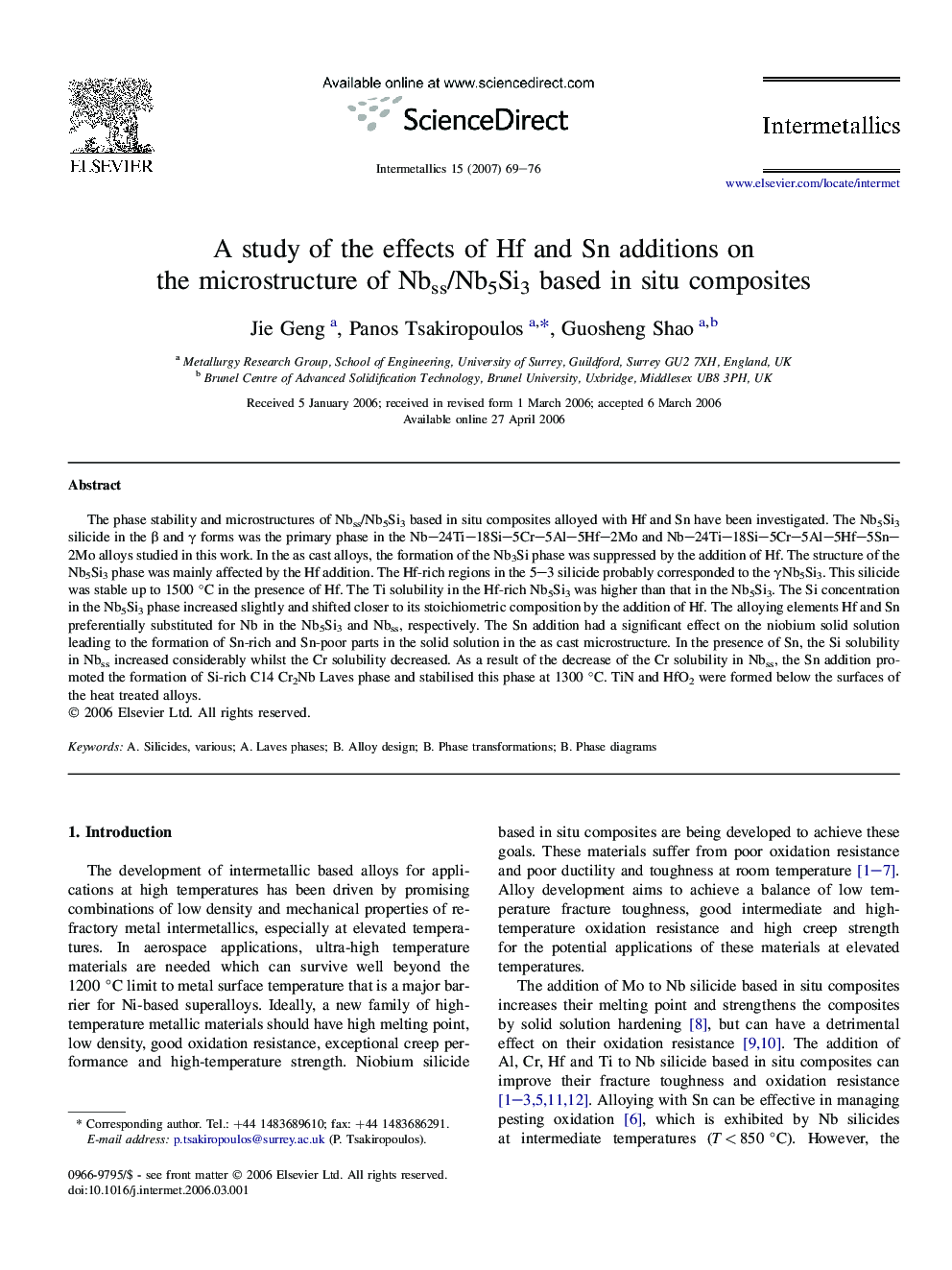| Article ID | Journal | Published Year | Pages | File Type |
|---|---|---|---|---|
| 1601581 | Intermetallics | 2007 | 8 Pages |
The phase stability and microstructures of Nbss/Nb5Si3 based in situ composites alloyed with Hf and Sn have been investigated. The Nb5Si3 silicide in the β and γ forms was the primary phase in the Nb–24Ti–18Si–5Cr–5Al–5Hf–2Mo and Nb–24Ti–18Si–5Cr–5Al–5Hf–5Sn–2Mo alloys studied in this work. In the as cast alloys, the formation of the Nb3Si phase was suppressed by the addition of Hf. The structure of the Nb5Si3 phase was mainly affected by the Hf addition. The Hf-rich regions in the 5–3 silicide probably corresponded to the γNb5Si3. This silicide was stable up to 1500 °C in the presence of Hf. The Ti solubility in the Hf-rich Nb5Si3 was higher than that in the Nb5Si3. The Si concentration in the Nb5Si3 phase increased slightly and shifted closer to its stoichiometric composition by the addition of Hf. The alloying elements Hf and Sn preferentially substituted for Nb in the Nb5Si3 and Nbss, respectively. The Sn addition had a significant effect on the niobium solid solution leading to the formation of Sn-rich and Sn-poor parts in the solid solution in the as cast microstructure. In the presence of Sn, the Si solubility in Nbss increased considerably whilst the Cr solubility decreased. As a result of the decrease of the Cr solubility in Nbss, the Sn addition promoted the formation of Si-rich C14 Cr2Nb Laves phase and stabilised this phase at 1300 °C. TiN and HfO2 were formed below the surfaces of the heat treated alloys.
